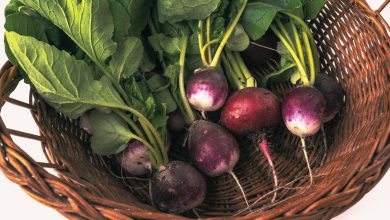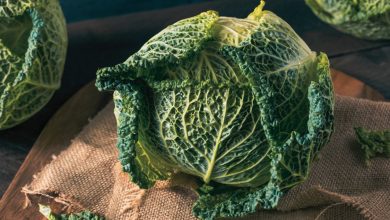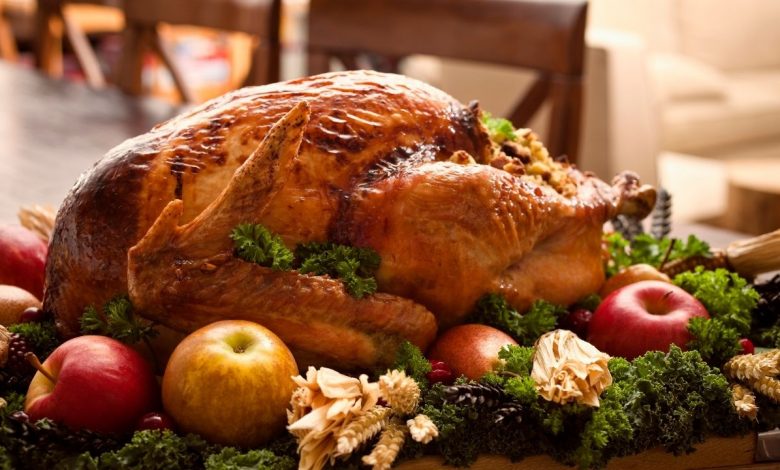
Roasting a turkey is a tradition that many people enjoy on Thanksgiving, Christmas, or other special occasions. However, roasting a turkey can also be intimidating, especially if you are doing it for the first time or have had bad experiences in the past. How do you choose the right turkey? How do you season it? How do you carve it? In this article, Trendbbq will answer all these questions and more, and show you how to roast a turkey that is juicy, flavorful, and tender. You will also learn some tips and tricks to make your turkey roasting experience easier and more successful.
Table of Contents,
1. How to Choose the Right Turkey
The first step to roasting a turkey is to choose the right turkey for your needs and preferences. Here are some factors to consider when choosing a turkey:
- Size: The size of the turkey depends on how many people you are serving and how much leftovers you want. A good rule of thumb is to allow about one pound of turkey per person, or one and a half pounds if you want plenty of leftovers. For example, if you are serving 10 people, you will need a 10- to 15-pound turkey.
- Fresh or frozen: You can choose between a fresh or frozen turkey, depending on your availability and convenience. A fresh turkey is ready to cook right away, but it has a shorter shelf life and may be more expensive. A frozen turkey is cheaper and can be stored longer, but it requires thawing before cooking, which can take several days in the refrigerator.
- Natural or enhanced: You can also choose between a natural or enhanced turkey, depending on your taste and health concerns. A natural turkey is minimally processed and has no added ingredients. An enhanced turkey is injected with a solution of salt, water, and other additives to make it more moist and flavorful. However, an enhanced turkey may also have more sodium and artificial ingredients.
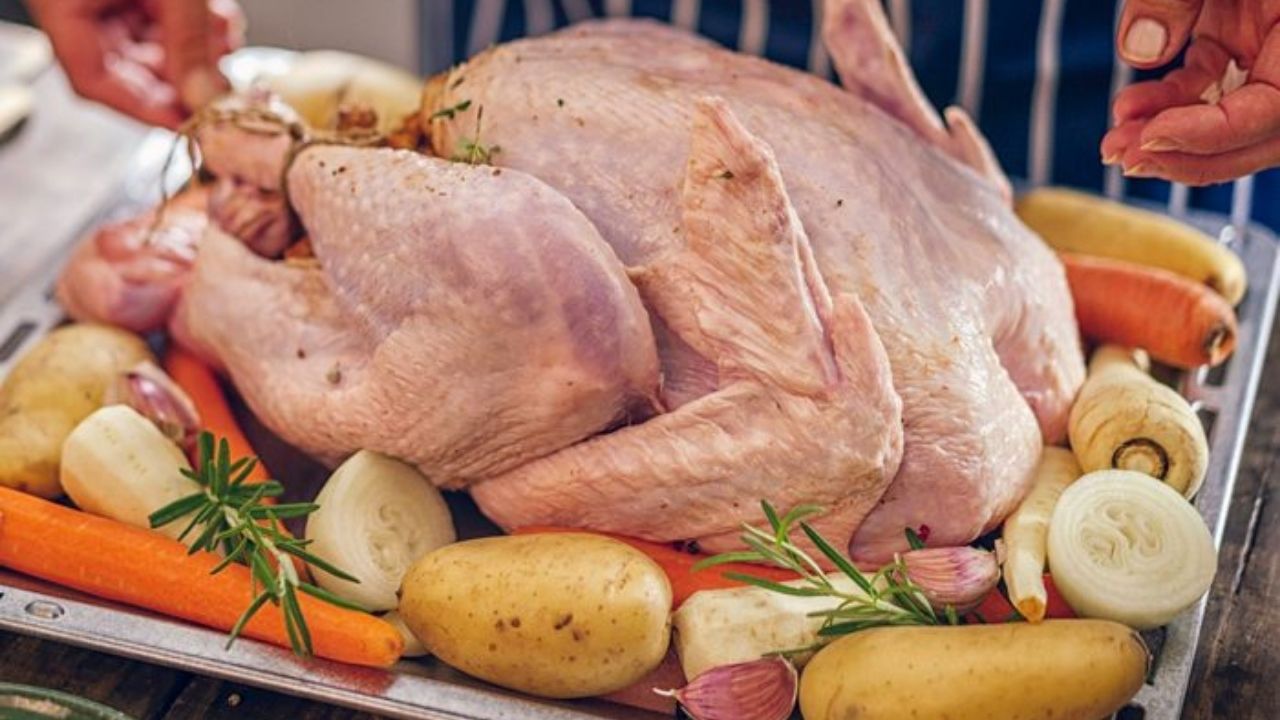
2. How to Thaw a Frozen Turkey
If you choose a frozen turkey, you need to thaw it properly before roasting it. The safest and easiest way to thaw a frozen turkey is in the refrigerator. Here are the steps to follow:
- Place the frozen turkey in its original wrapper on a large tray or baking dish to catch any drips.
- Place the tray or baking dish in the refrigerator on the lowest shelf.
- Allow about 24 hours of thawing time for every four to five pounds of turkey. For example, if you have a 12-pound turkey, you will need about three days of thawing time.
- Check the turkey periodically to make sure it is thawing evenly. If there are any ice crystals or cold spots, massage them gently with your hands.
- Once the turkey is completely thawed, remove it from the refrigerator and proceed with the preparation.
3. How to Prepare the Turkey for Roasting
Before roasting the turkey, you need to prepare it by following these steps:
- Remove the neck and giblets from the cavity of the turkey. You can discard them or use them for making stock or gravy.
- Wash the turkey both inside and outside using cold water, and then use paper towels to dry it.
- If you want to stuff the turkey, do it now by spooning your stuffing loosely into the cavity. Do not overstuff the turkey, as this can cause uneven cooking and bacterial growth. You will need about 3/4 cup of stuffing per pound of turkey.
- If you do not want to stuff the turkey, you can place some aromatics in the cavity instead, such as onion, garlic, lemon, herbs, or spices. This will add some flavor and moisture to the turkey.
- Secure the legs using kitchen twine and fold the wings beneath the turkey’s body. This will help keep the shape and prevent overcooking.
- Rub some butter or oil all over the skin of the turkey and season it with salt, pepper, and any other herbs or spices that you like.
4. How to Roast a Turkey
Now that your turkey is ready, you can roast it by following these steps:
- Preheat your oven to 325°F (163°C) and adjust the oven rack to the lowest position.
- Put your prepared turkey with the breast facing up onto a rack inside a spacious roasting pan. Add some water, broth, wine, or juice to the bottom of the pan to prevent burning and provide some moisture.
- Place an ovenproof meat thermometer into the thickest section of the thigh, making sure not to make contact with the bone. If your turkey is stuffed, insert another thermometer into the center of the stuffing.
- Loosely place aluminum foil over the turkey to avoid excessive browning. You can remove the foil during the last hour of roasting to crisp up the skin.
- Roast the turkey according to the following chart, or until the thermometer in the thigh reads 180°F (82°C) and the thermometer in the stuffing reads 165°F (74°C). Baste the turkey occasionally with the pan juices or melted butter to keep it moist.
| Weight | Unstuffed | Stuffed |
| 8 to 12 lbs | 2 3/4 to 3 hours | 3 to 3 1/2 hours |
| 12 to 14 lbs | 3 to 3 3/4 hours | 3 1/2 to 4 hours |
| 14 to 18 lbs | 3 3/4 to 4 1/4 hours | 4 to 4 1/4 hours |
| 18 to 20 lbs | 4 1/4 to 4 1/2 hours | 4 1/4 to 4 3/4 hours |
| 20 to 24 lbs | 4 1/2 to 5 hours | 4 3/4 to 5 1/4 hours |
- When the turkey is done, transfer it to a large cutting board and let it rest for at least 20 minutes before carving. This will allow the juices to redistribute and make the turkey easier to slice.
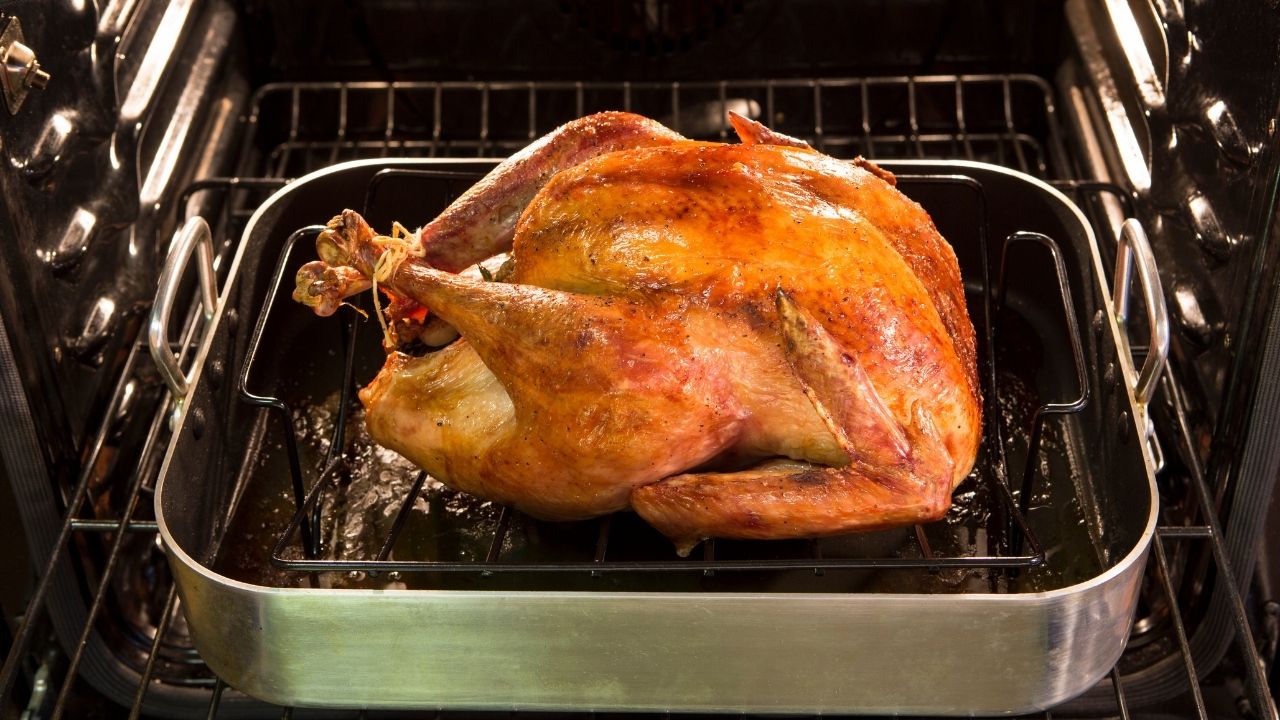
5. How to Carve the Turkey
To carve the turkey, you will need a sharp carving knife and a large fork. Here are the steps to follow:
- Cut off the twine and remove the stuffing from the cavity. Transfer the stuffing to a serving bowl and keep it warm.
- Cut off the legs and thighs by slicing through the skin between them and the body. Pull them away from the body and cut through the joint. You can either leave them whole or separate them into drumsticks and thighs.
- Cut off the wings by slicing through the skin between them and the body. Pull them away from the body and cut through the joint.
- Cut off the breast meat by slicing along one side of the breastbone and then along the rib cage. Repeat on the other side. You can either leave the breast meat whole or slice it crosswise into thin pieces.
- Arrange the turkey pieces on a large platter and serve with your favorite gravy, cranberry sauce, or other accompaniments.
6. FAQs
6.1. How do I choose the right size turkey for roasting?
A general rule is to plan for about 1 pound (0.45 kg) of turkey per person. For larger gatherings with plenty of side dishes, you can go with slightly less, but having leftovers can be a great thing.
6.2. Should I brine the turkey before roasting it?
Brining is a great way to add flavor and moisture to your turkey. You can choose a wet or dry brine, but it’s not necessary. If you don’t have the time or space to brine, you can still roast a delicious turkey.
6.3. How long does it take to roast a turkey, and at what temperature?
The roasting time depends on the size of the turkey. A common guideline is to roast at 325°F (163°C) for about 15 minutes per pound (0.45 kg). Use a meat thermometer to ensure the internal temperature of the thickest part of the thigh reaches 165°F (74°C).
6.4. How do I prevent the turkey breast from drying out during roasting?
To prevent the breast from drying out, you can cover it with bacon strips or a piece of aluminum foil for the first part of roasting. This helps protect the breast meat while allowing the rest of the turkey to cook.

